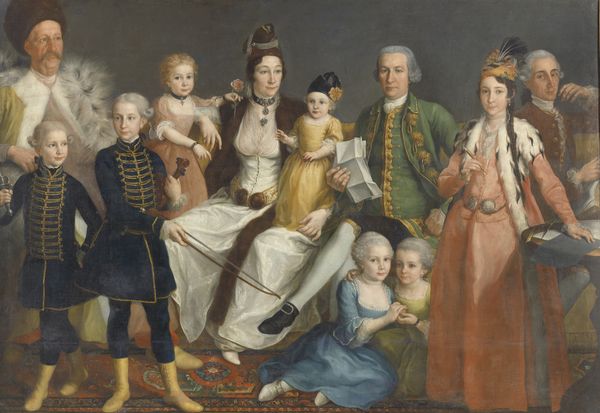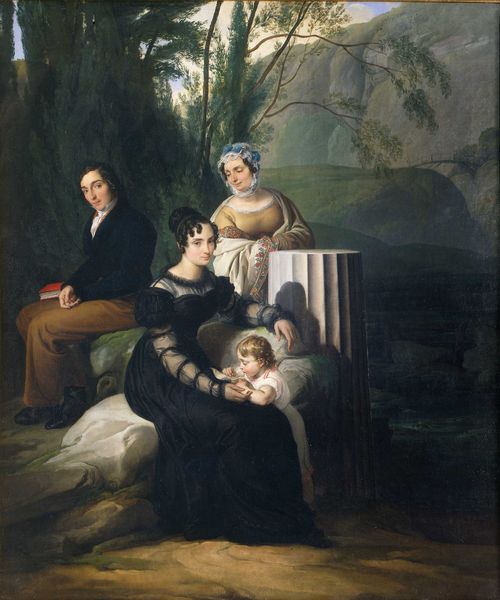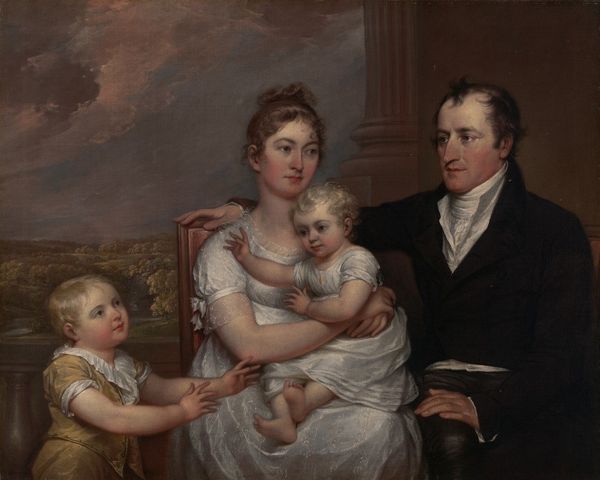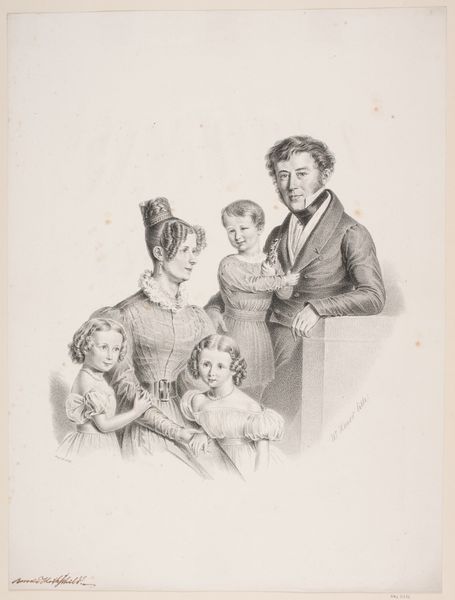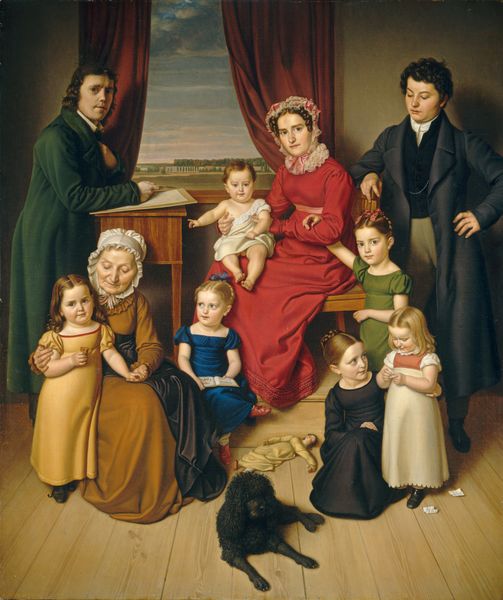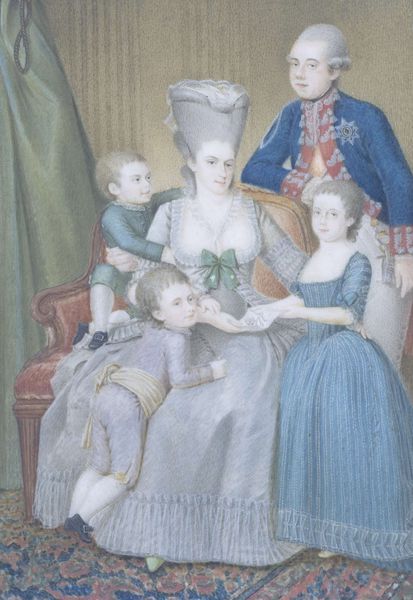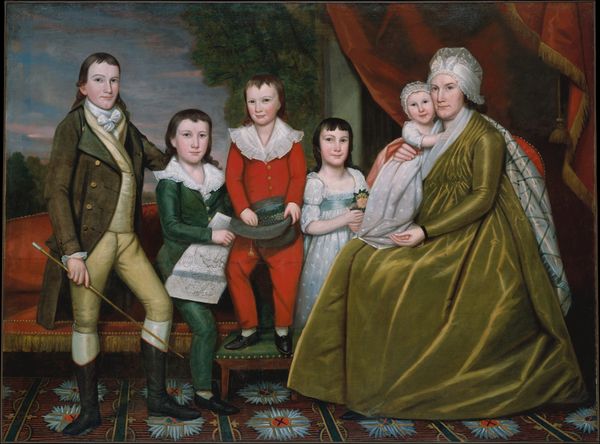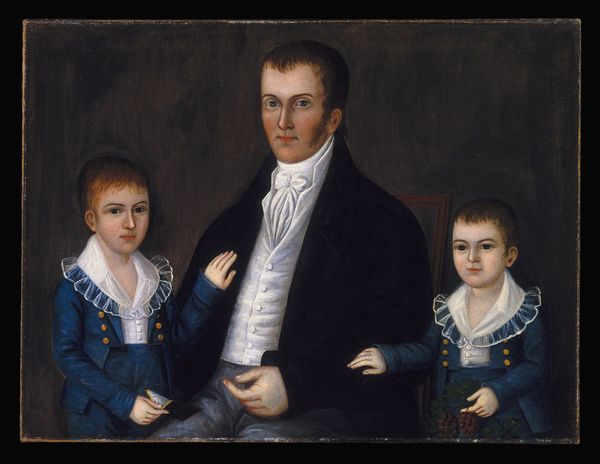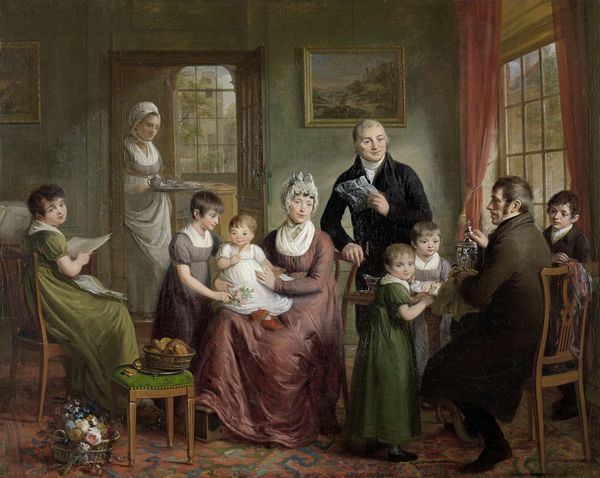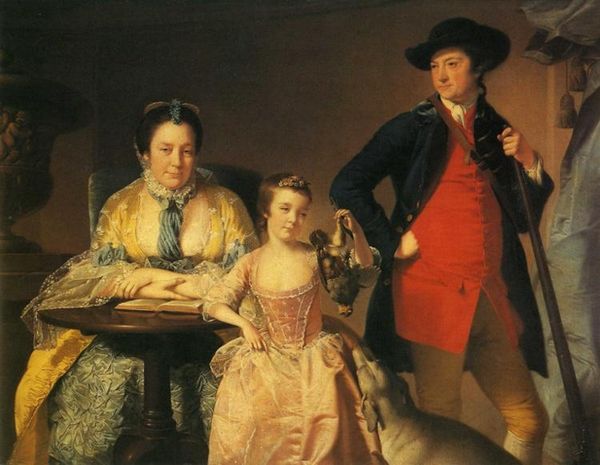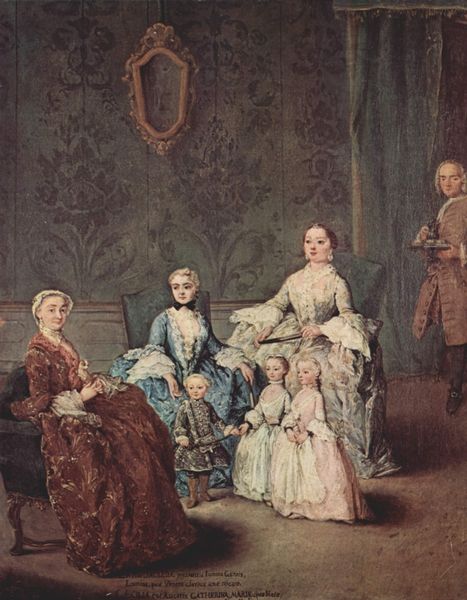
painting, oil-paint
#
portrait
#
fancy-picture
#
painting
#
oil-paint
#
figuration
#
historical fashion
#
intimism
#
group-portraits
#
romanticism
#
genre-painting
#
history-painting
#
academic-art
#
realism
Dimensions: height 14.3 cm, width 18.6 cm, depth 5.5 cm
Copyright: Rijks Museum: Open Domain
Curator: Willem Grebner painted "The Diederichs Family" in 1836. The oil-on-canvas artwork offers an intimate look into a family portrait of the time. Editor: My first impression is of quiet dignity. It’s all very composed and self-contained, like a little stage. But the children also make me feel it is almost like a dream, or like figurines in a dollhouse. Curator: Indeed. The work fits within the tradition of family portraits while echoing larger social narratives concerning bourgeoisie values of family, order, and social standing. Note the clothing—each element emphasizes societal status and constructed identities through careful sartorial choices. The work’s detailed portrayal aligns with both Romantic and Realist currents, reflecting the era's artistic sensibilities. Editor: Exactly. It's like they're all playing roles, aren’t they? Each carefully arranged to convey respectability and… maybe a touch of underlying anxiety? You know, underneath the lace collars, you can sense this tension—like, “Are we doing this right? Are we proper enough?” Curator: Absolutely. There’s a complex interplay of gazes and subtle signifiers. The artist employs established iconographic forms, yet one sees emerging themes of family dynamics—though those dynamics are quite codified, influenced by period conventions. This approach could be contextualized within burgeoning capitalist and patriarchal power structures shaping social life. Editor: But look how rigidly posed they are, as if someone yelled "freeze!". Except, the kid with the book looks vaguely rebellious, doesn’t she? Like she's about to chuck that thing across the room, or maybe start quoting subversive poetry when her dad isn't listening! Curator: Well, that could be an interesting counter-reading of subversion from normative codifications. However, that also depends how you address art historical and cultural theory surrounding representation of women and children during this era... Editor: Oh, definitely. Art history, social history... but sometimes a painting just whispers, "I'm about to cause some trouble," doesn't it? And that hint of disobedience makes this whole thing just a tad more human, maybe? Curator: That reading offers intriguing possibilities. Personally, engaging this portrait reminds me to re-examine our interpretation of artwork beyond its aesthetic appearance and to examine the artwork and its relations with identity, history and power. Editor: Yes! Me too! For me, viewing this, I’m kind of seeing a ghostly ancestor, one of my people from way back then. So I ask: “How are you all feeling about being put on display?” and listen. It’s surprising what art reveals if you allow it.
Comments
No comments
Be the first to comment and join the conversation on the ultimate creative platform.
